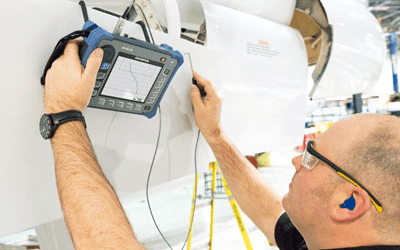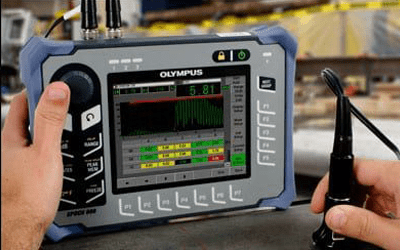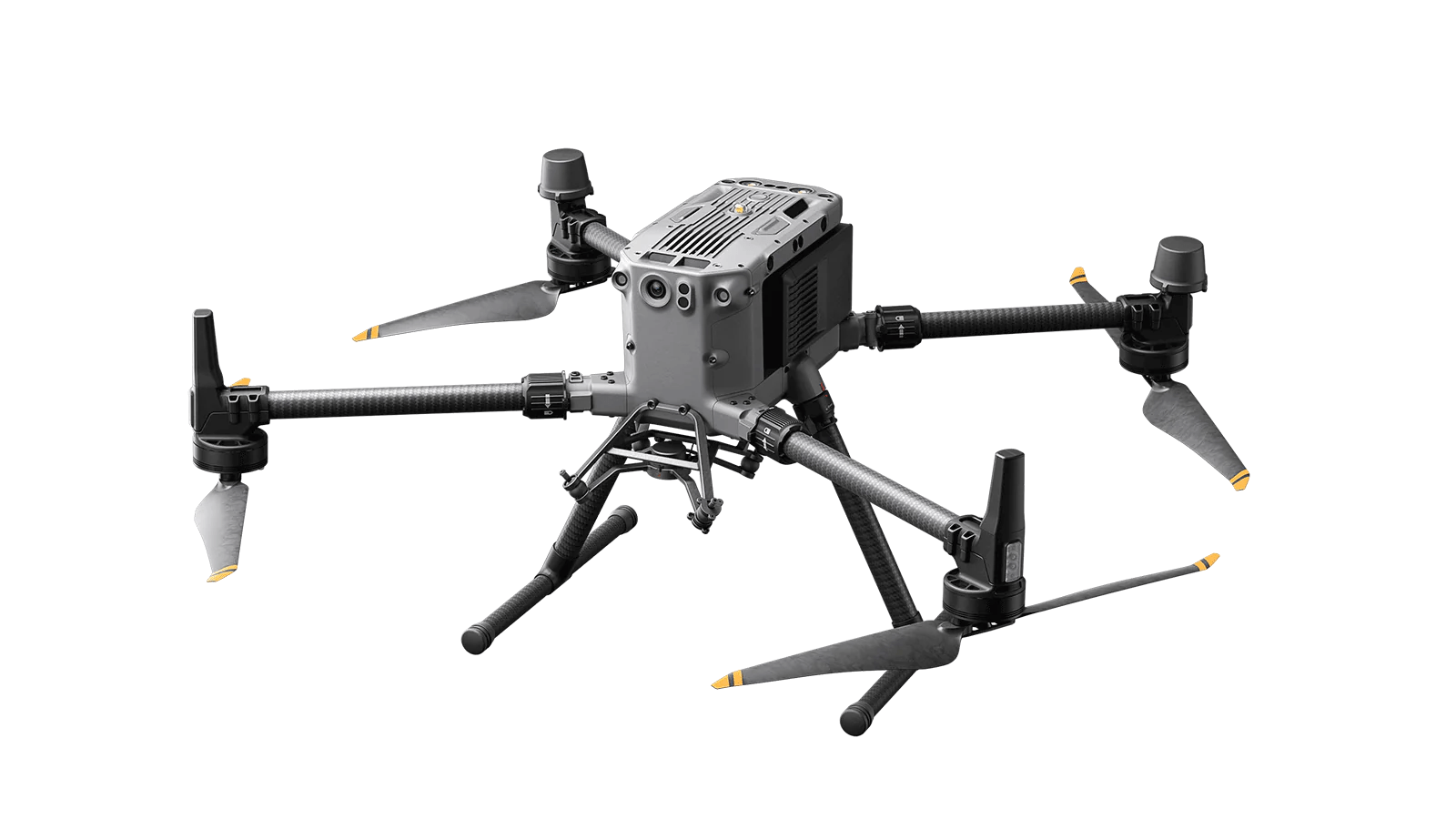
Top Quality NDT Inspection Tools For Rent & Sale
Industry-Leading Reliability and Precision for Your Inspection Needs

Top Quality NDT Inspection Tools For Rent & Sale
Industry-Leading Reliability and Precision for Your Inspection Needs
Accurate
Dependable
Compliant
MFE’s NDT inspection tools are the best options on the market, carefully curated by our team of inspectors, technicians, engineers & subject matter experts who have a comprehensive understanding of the industries we serve and the equipment they need.
Types of NDT Products MFE Offers for Rent or Sale

✔ Acoustic Imaging
✔ XRF Elemental Analyzers
✔ Gas Detection Cameras
✔ Ground Penetrating Radar
✔ Hardness Testers
✔ Holiday Testers
✔ Infrared Cameras
✔ Material Testing Equipment
✔ MFL Scanners
✔ Ultrasonic Thickness Gauges
Featured NDT Equipment
Teledyne FLIR GF320
Optical Gas Imaging

Uses
- Leak Detection and Repair (LDAR): Quickly locating and visualizing gas leaks in industrial settings to minimize emissions and ensure compliance with environmental regulations.
- Maintenance and Inspection: Performing routine and targeted inspections of industrial equipment and infrastructure to identify leaks that could lead to equipment failure or operational inefficiencies.
- Environmental Monitoring: Assessing and monitoring gas emissions to ensure environmental standards are met and to reduce the organization’s carbon footprint.
- Safety: Enhancing workplace safety by identifying hazardous gas accumulations that could lead to explosions or health hazards for workers.
Assets
- Pipelines and Distribution Networks: OGI cameras are used to inspect pipelines, especially those transporting natural gas, oil, and chemical products, to detect leaks and ensure integrity over vast distances.
- Storage Tanks: Tanks holding liquids or gasses, including natural gas storage facilities and chemical storage tanks, are inspected for leaks to prevent loss and environmental contamination.
- Compressor Stations: These facilities, critical in the transmission of gas through pipelines, are inspected for leaks in their compression equipment to ensure efficient operation and safety.
- Flare Stacks: OGI cameras help monitor flare stacks in oil and gas operations to ensure that gasses are being combusted properly and efficiently, reducing emissions.
- Valves and Connectors: These components are crucial in controlling the flow of gases and liquids in industrial systems. OGI cameras can detect leaks that might not be apparent during routine inspections.
- LNG Facilities: Liquefied Natural Gas (LNG) facilities, where natural gas is cooled and liquefied for transport and storage, are inspected for leaks to maintain operational integrity and safety.
- Chemical Plants: In chemical manufacturing, OGI cameras help identify leaks of volatile organic compounds (VOCs) and other hazardous gasses, ensuring worker safety and regulatory compliance.
Industries
- Oil and Gas
- Chemical Manufacturing
- Power Generation
- Waste Management and Landfills
- Petrochemical Refineries
- Utilities and Municipal Services
- Pharmaceuticals, Agriculture
- Environmental Monitoring
Olympus Nortec 600
Eddy Current

Uses
- Multi-frequency Capability: The Nortec 600 can operate at multiple frequencies, enabling it to inspect a variety of materials and structures, from thin sheets to thick, layered components.
- Rotating Scanner Support: It supports the use of rotating scanners for fast and efficient inspection of cylindrical parts like tubes and shafts.
- Vivid Display: Features a bright, high-contrast display that makes flaw detection and interpretation more straightforward, even in challenging lighting conditions.
- Portable and Rugged: Designed for field use, the Nortec 600 is both lightweight and durable, making it suitable for on-site inspections in various environments.
Assets
- Aerospace Components: Inspection of aircraft skin for cracks or corrosion, engine parts for cracks or wear, and bolt hole inspections for integrity checks.
- Power Generation Equipment: Examination of steam turbine blades, heat exchanger tubes, and boiler tubes for signs of stress corrosion cracking, pitting, or erosion.
- Automotive Industry: Inspection of critical automotive parts like axles, wheels, and suspension components for surface flaws or cracks.
- Railroad Industry: Checking for cracks or defects in rail tracks, wheels, and axles to prevent failures that could lead to derailments.
- Manufacturing: Quality control of metal parts and welded joints in various manufacturing processes to ensure they meet safety and quality standards.
Industries
-
Aerospace
-
Power Generation
-
Oil & Gas
-
Automotive Manufacturing
-
Railroad
-
Manufacturing and Metal Fabrication
-
Infrastructure and Construction
EPOCH 650 Ultrasonic
Ultrasonic Flaw Detector

Uses
-
Crack Detection: Identifying cracks inside components or structures which are not visible on the surface. This is crucial in industries where structural integrity is paramount, such as aerospace and automotive manufacturing.
-
Thickness Measurement: Gauging the thickness of pipes and tanks, especially in the oil and gas industry, to monitor corrosion or erosion over time. This helps in preventive maintenance and safety checks.
-
Weld Inspection: Assessing the quality of welds in metal structures. Ultrasonic flaw detectors can identify flaws within the weld that could lead to failure under stress.
-
Composite Material Inspection: In industries such as aerospace and automotive, composite materials are common. The EPOCH 650 can inspect these materials for delaminations or other defects that could compromise their structural integrity.
-
Bond Testing: Evaluating the quality of adhesively bonded structures, which is critical in both manufacturing and maintenance of various industrial products.
Assets
- Aerospace Components: Including aircraft fuselage, wings, and engine parts where failure can have catastrophic consequences.
- Pipeline Systems: Especially in the oil, gas, and chemical industries, where leaks could lead to environmental disasters or significant financial losses.
- Railway and Automotive Components: Ensuring the safety and reliability of critical components such as axles, wheels, and chassis components.
- Ship Hulls and Marine Structures: For integrity checks against corrosion and fatigue damage in the harsh marine environment.
- Wind Turbine Blades: Inspecting for internal defects that could lead to failure in operation, ensuring the efficiency and safety of wind energy production.
- Pressure Vessels and Storage Tanks: Used in various industries to ensure they can safely hold gasses or liquids under pressure.
Industries
- Aerospace
- Oil & Gas
- Power Generation
- Manufacturing
- Infrastructure and Construction
- Maritime
- Railroad

Why NDT Inspection Equipment?
Non-destructive testing is an important part of maintaining operational efficiency, safety, and reliability in various industrial sectors, and it’s a key component in quality control processes. Having an NDT protocol:
Ensures safety
One of the primary objectives of NDT is to ensure the safety of products, transportation systems, and infrastructure used around the world. It plays a critical role in inspecting and certifying the safety of items we use daily, and it’s crucial for detecting flaws that could lead to severe accidents if left unchecked.
Avoids unplanned outages & downtimes
In industries like nuclear power, NDT helps in identifying defects such as weld discontinuities and structural anomalies within materials. The detection of such defects is crucial to prevent unplanned outages and ensure the continuous and reliable operation of facilities, significantly impacting industrial productivity and operational success.
Preserves structural integrity
NDT’s non-invasive nature is essential in preserving the structural integrity of the materials tested. Since the methods used in NDT do not damage or alter the material, component, or assembly being tested, they remain in their operational condition after the test, which is crucial for maintaining the longevity and performance of the materials and components.
Supports quality control
NDT provides the highest level of quality control throughout all stages of assembling any equipment or structure. It is instrumental in ensuring that the products meet the requisite standards and specifications, thereby guaranteeing customer satisfaction and adherence to regulatory compliance. It is a practical and flexible technique that can find issues or flaws in materials without compromising their quality.
Is cost-efficient
NDT is also significant due to its cost-efficiency. By identifying defects or irregularities early in the production cycle or operational life of equipment, it helps in avoiding the substantial costs associated with catastrophic failures or extensive repairs. The early detection of defects enables industries to address issues promptly, thereby reducing downtime and associated costs.

Make the right decision
How to Choose The Right Non-Destructive Testing Method
Selecting the optimal non-destructive testing (NDT) method demands meticulous analysis, considering factors like accuracy, cost-effectiveness, and reliability, with upfront and ongoing expenses playing crucial roles. Inspectors should consider these factors when choosing the right NDT method:
Material Type & Shape
Various materials possess unique physical and chemical characteristics, requiring a range of testing methods.
Object Size & Accessibility
NDT methods vary in their suitability for different object sizes, with some being better suited for large-scale objects and others for smaller items.
Defect Type and Location
Some methods are more sensitive to surface defects, while others are proficient in detecting subsurface anomalies.
Cost & Time Efficiency
Cost and time involved should be weighed against the benefits provided by each method, ensuring that the process is both economical and effective.
NDT FAQs
In the world of professional inspections, queries surrounding the reliability, cost, distinctions, and defect-detection capabilities of NDT are prevalent. Here, we address these common questions with expert answers and explanations.
Is NDT reliable?
Non-destructive testing is widely regarded as a reliable inspection method in numerous industries, offering invaluable insights into the integrity and condition of materials and components. Its reliability hinges on the proper application of the method, adequate training of the operator, and the choice of the most suitable NDT technique for the task at hand. Different NDT methods have different levels of reliability in detecting various types of defects, making the choice of method pivotal in obtaining reliable results.
How much does NDT cost?
The cost of NDT varies widely, depending on factors such as the method used, the extent of the testing, and the specifics of the components being tested. Advanced methods requiring sophisticated equipment and highly skilled operators might entail higher costs. However, the investment in NDT is generally justified by the prevention of catastrophic failures and the extension of component life, often making it a cost-effective choice in the long run.
How is NDT different from other inspection methods?
The defining characteristic of NDT is its ability to assess materials and components without causing damage or altering their functionality, a feature absent in destructive testing methods. This allows for in-service inspections, thus promoting safety and reliability without compromising the integrity of the material or component.
Can NDT detect all types of defects?
While NDT is a powerful tool, it is not infallible and may not detect all types of defects, especially if the defects are sub-surface or too small. The effectiveness of NDT in detecting defects is heavily reliant on choosing the correct method for the application, and it may necessitate the use of multiple NDT methods to identify different types of defects effectively. For instance, Ultrasonic Testing may be suited to detect subsurface defects, while Dye Penetrant Testing might be more efficient in revealing surface cracks and discontinuities.
NDT Inspection Equipment
Want to learn more?
Download our Complete Guide To Non-Destructive Testing: A comprehensive look at why NDT is essential for ensuring the safety, reliability, and longevity of materials and structures without compromising usability.
